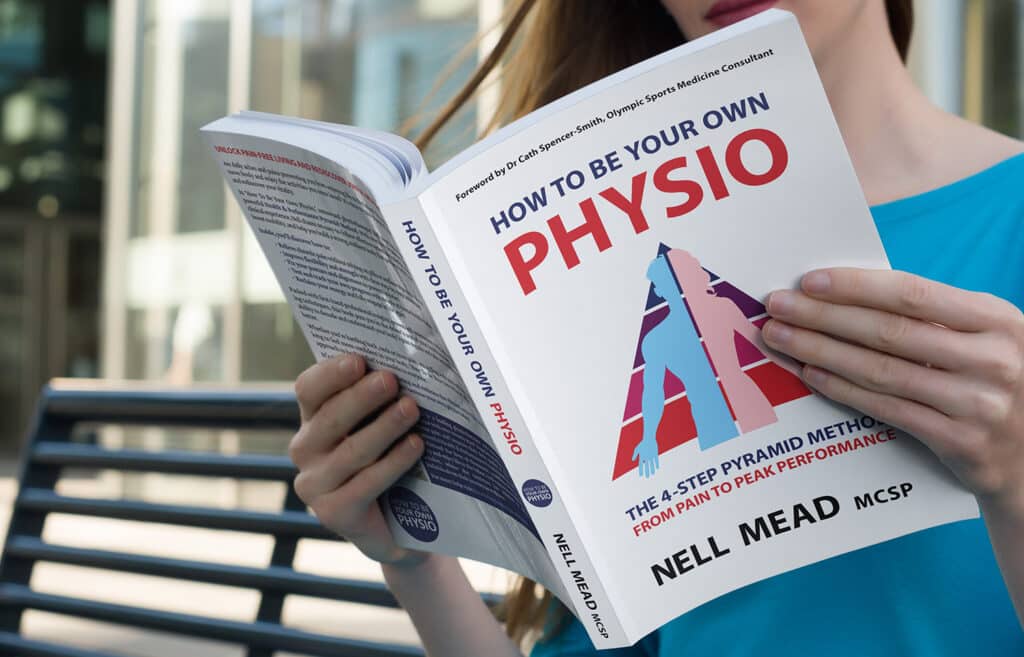“This is great! Can I just sit here for the next hour?” That’s a question I hear several times a week, as newcomers in my practice, sink into the rocking chair from the Back in Action shop in my treatment room.
Why a rocking chair, I hear you ask? Well, to answer this, we have to go back to the principles of what backs like, and what they don’t.
You have 29 bones in the spine, of which 24 move freely. You have 23 intervertebral discs (there’s no disc between C1 and C2, just below your skull). Spines are designed for movement, not for staying still for long periods.
As I’ve blogged before, discs are built a bit like rubbery doughnuts, with a thick, tough outer ring (annulus fibrosus) and a more jellylike centre (nucleus pulposus). The nucleus is supposed to bear most of the weight, but this can only happen if there’s enough fluid in it — otherwise it flattens down, and you end up weight bearing through the annulus, which can lead to degeneration and pain. We can encourage fluid to flow into the nucleus if we regularly alter the pressure on the disc, leaning back and forth to stretch and squash different areas. Conversely, if we stay still for too long, even if we have “perfect posture”, the disc gradually compresses, with fluid draining out faster than it can flow back in.
The amount of pressure going through the discs is important — discs don’t like being put under sustained high pressure. Factors that increase pressure through the discs include:
- Your back muscles. The muscles that support the back have vertically oriented fibres. So when you make them work (for example, carrying heavy objects, or sitting unsupported), they compress the discs. They also compress the discs when they are in spasm, which is a normal response to pain. Spasm is when the muscles get stuck in a shortened position, and this will obviously exert increased pressure on the discs.
- Posture. Alf Nachemson’s team published a study in 1981 whereby volunteers had pressure transducers inserted into their spinal discs, and, the level of pressure was measured in a variety of different postures. The lowest pressure was recorded when the subjects were lying flat, and the highest when they were bending and twisting (in this position, disc pressure was 400% more than when standing straight). Although this research is relatively old, it’s sound — and we can’t reproduce the tests today because no ethics committee is going to approve the non-therapeutic insertion of pressure transducers into healthy discs these days! Much too risky.
- Excessive loading. This largely means carrying heavy objects, though there is some evidence to suggest that being significantly overweight may also contribute to back pain.
It is normal for fluid to drain out of the discs during the day (it’s common to be a centimetre or two shorter before bed, than you are when you wake up, because fluid flows into the discs overnight when you’re lying down and relaxed) but the more you can reduce this, and keep the discs hydrated during the day, the less likely you are to suffer from disc-related back pain.
So, how do you encourage the discs to keep hydrated? There’s a lot that you can do!
- Reduce the amount of time that you spend sitting down — get up and move and stretch. Big movements such as toe touching and using the back block cause significant pressure change across the discs, encouraging fresh fluid to flow in. Here is another tip i have for you: How to bend without hurting your back.
- When you are sitting, make sure you are supported, especially if you have back pain. This reduces the work the back muscles have to do — and thus reduces the compressive forces produced by those muscles. Nachemson’s study showed reduced compression in people who sat supported (compared to standing upright, pressure was reduced by 40% in people who sat back with support) compared to those who sat without support (compared to standing upright, unsupported upright sitting actually increased disc pressure by 50%, and unsupported slouching increased disc pressure by 75%).
- Drink plenty of water. This is what keeps the nucleus plumped up; but it can only flow into the disc if it’s freely available in your body!
So, with the theory out of the way, I think rocking chairs are helpful to prevent excessive sustained loading in the discs because:
- Whether you sit back or sit forwards, the back of the chair follows you and provides some support — thereby reducing the amount of work the muscles have to do to support you: reducing pressure.
- They keep you moving: I defy anyone to sit still on a rocking chair for a long period. This keeps altering the pressure across the disc — admittedly, not nearly as much as it alters if you have a really good stretch; but still, it’s a help.
- They encourage you to sit back, which as we know decreases disc pressure by 50% compared to standing.
In summary, to keep your back as healthy as possible, I encourage you to find a chair that moves with you, rather than one that tries to hold you still. The comfy ones we use in the practice are the Ten Two (pictured above) and the RH Logic 400 (which looks more like an office chair, although the rocking mechanism is the same as in the Ten Two) — but other models are available. Back in Action offer seating assessments and help you to find the most appropriate chair for you.







